Bull Thistle
- Composite or aster (Asteraceae family):
- Cirsium vulgare (Savi) Tenore
- EPPO code:
- CIRVU
- Other names:
- Spear thistle.
Species information
- Lifecycle:
- Biennial.
- Propagation:
- Reproduces by seed.
- Emergence:
- Seeds germinate in both the fall and spring.
- Habitat:
- Bull thistle is found everywhere in Ontario. In agricultural landscapes, it is most commonly found along fence lines and roadsides, and in pastures and waste areas.
- Competitiveness:
- The main concern with bull thistle is that it is not palatable to most types of livestock, with the exception of goats.
Identification clues
Seedling
- Cotyledons:
- Egg-shaped to almost round, fleshy with a short stalk, 8 to 15 mm long.
- Young leaves:
- Bull thistle’s first leaves are oval with a fringe of spines, and dark green with dense, white hairs on the under surface.
- Mature leaves:
- Its rosette leaves are dark green; the upper and lower surfaces are covered in dense, white hairs. Margins are deeply lobed with sharp spines at the tip of each lobe.
Mature plant
- Stems:
- Bull thistle’s stem is erect and branched with a mix of sharp spines and dense white hairs. It is green to greenish-red in colour.
- Flowers:
- The flower heads are round to pear shaped; florets are bright purple and come out at the top. Below the florets there are several spiny bracts.
- Roots:
- In its first year, a taproot forms. In its second year, a secondary fibrous root system will typically form.
Often mistaken for
I know it's not Canada thistle because the leaves of Canada thistle are lighter green in colour and relatively hairless in comparison to the dark green and very wooly leaves of bull thistle. The flower head of bull thistle is three times as large as that of Canada thistle.
I know it's not Nodding thistle because the leaves of nodding thistle are more deeply lobed, bright green and lack the white surface hairs that appear on the dark green leaves of bull thistle. Although the flower heads of each species appear similar, nodding thistle’s flower head will eventually nod towards the ground, while bull thistle’s will stay upright.
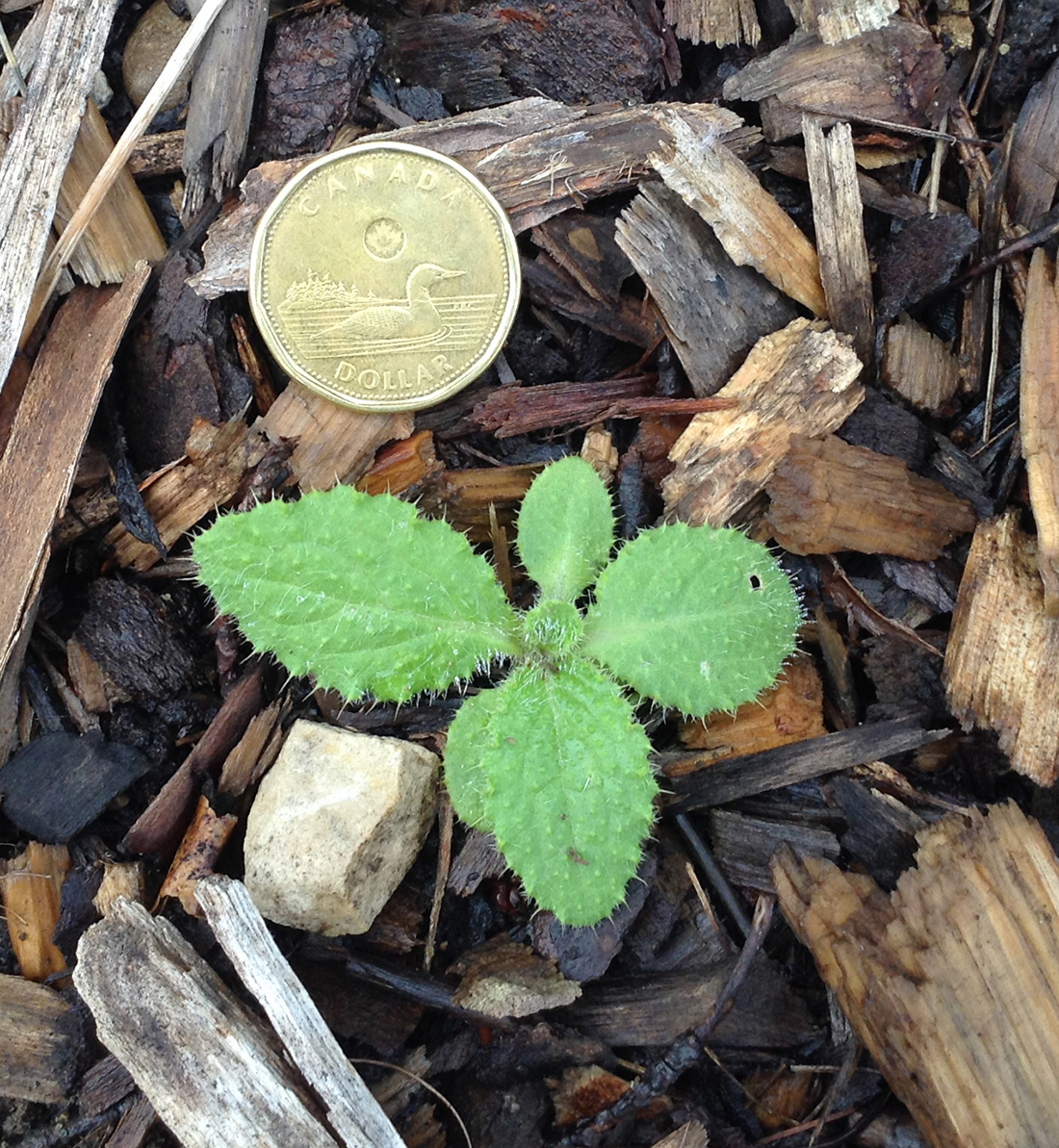
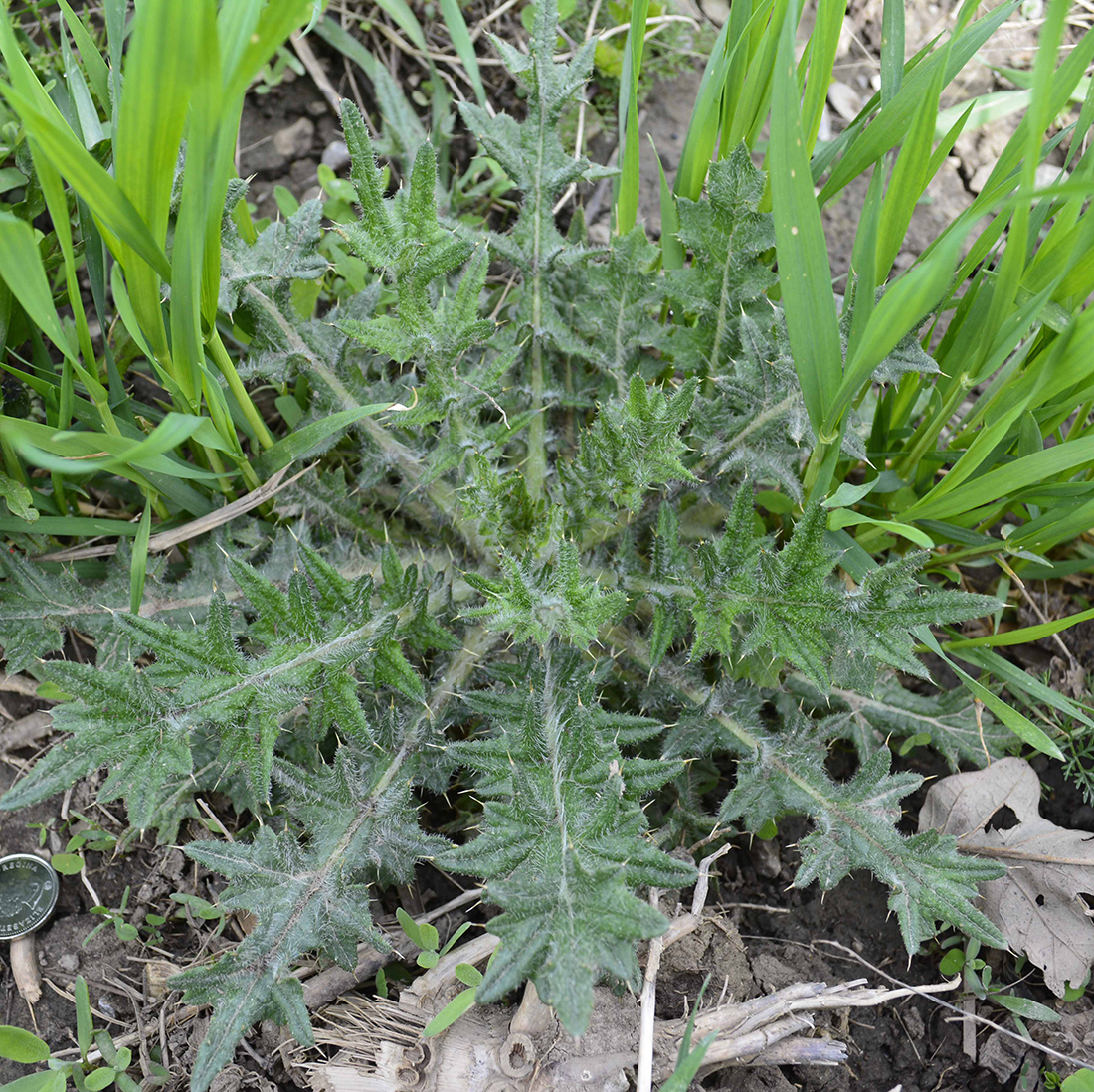
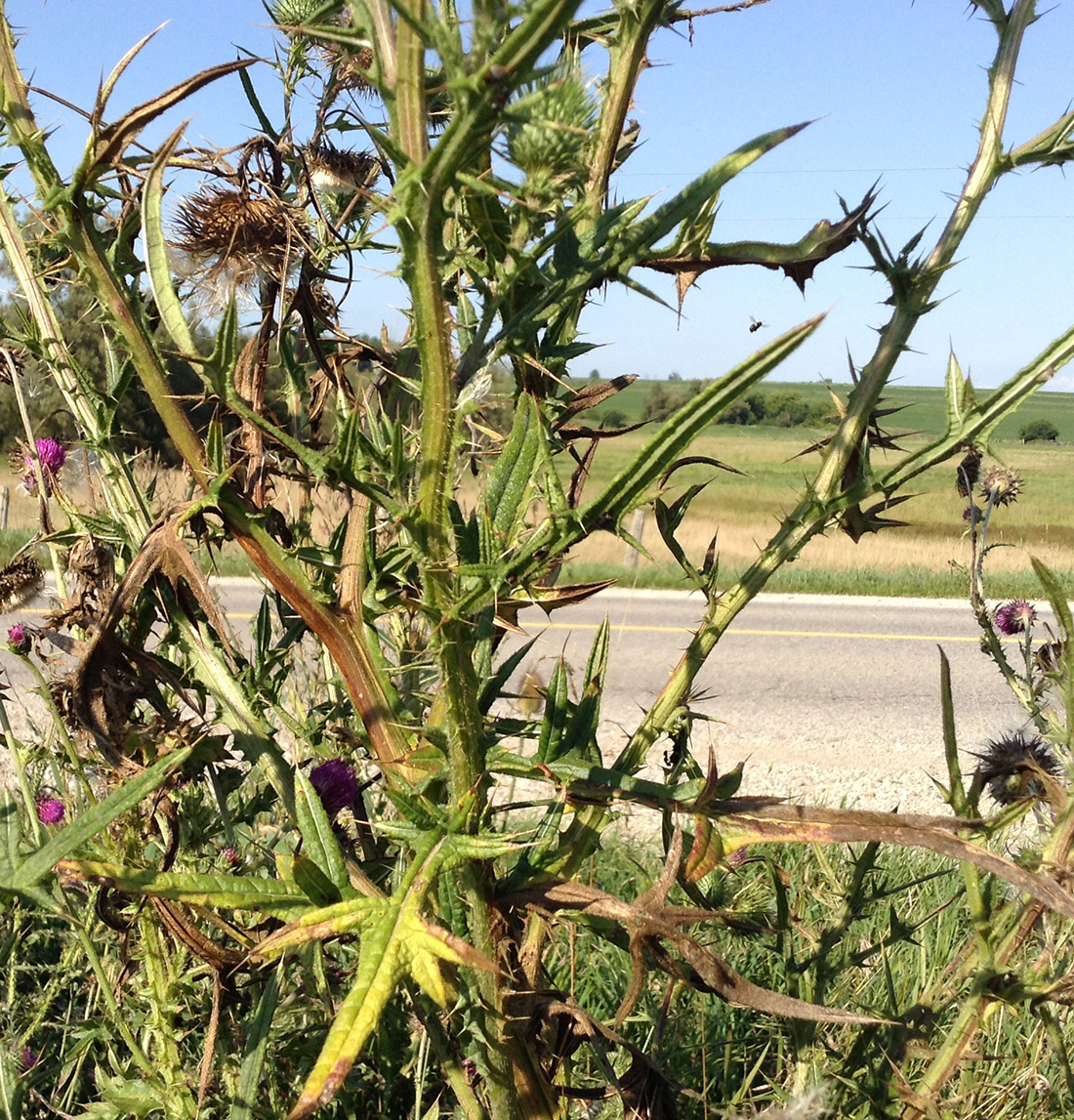
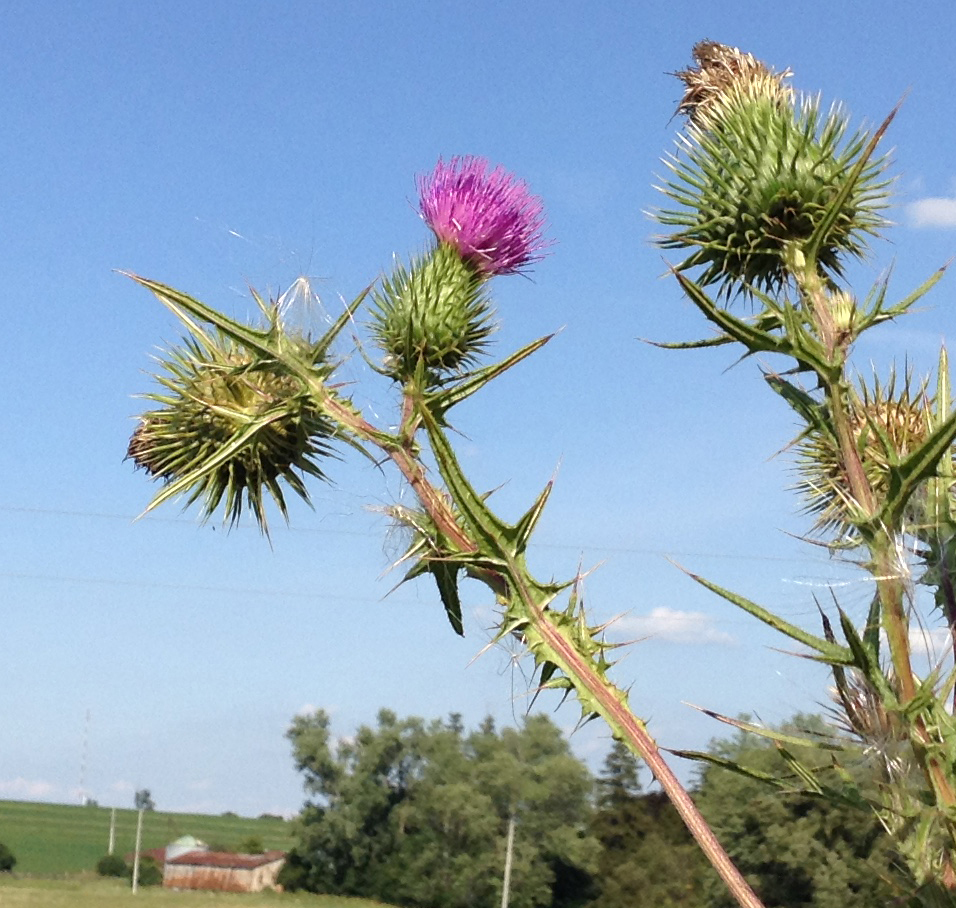
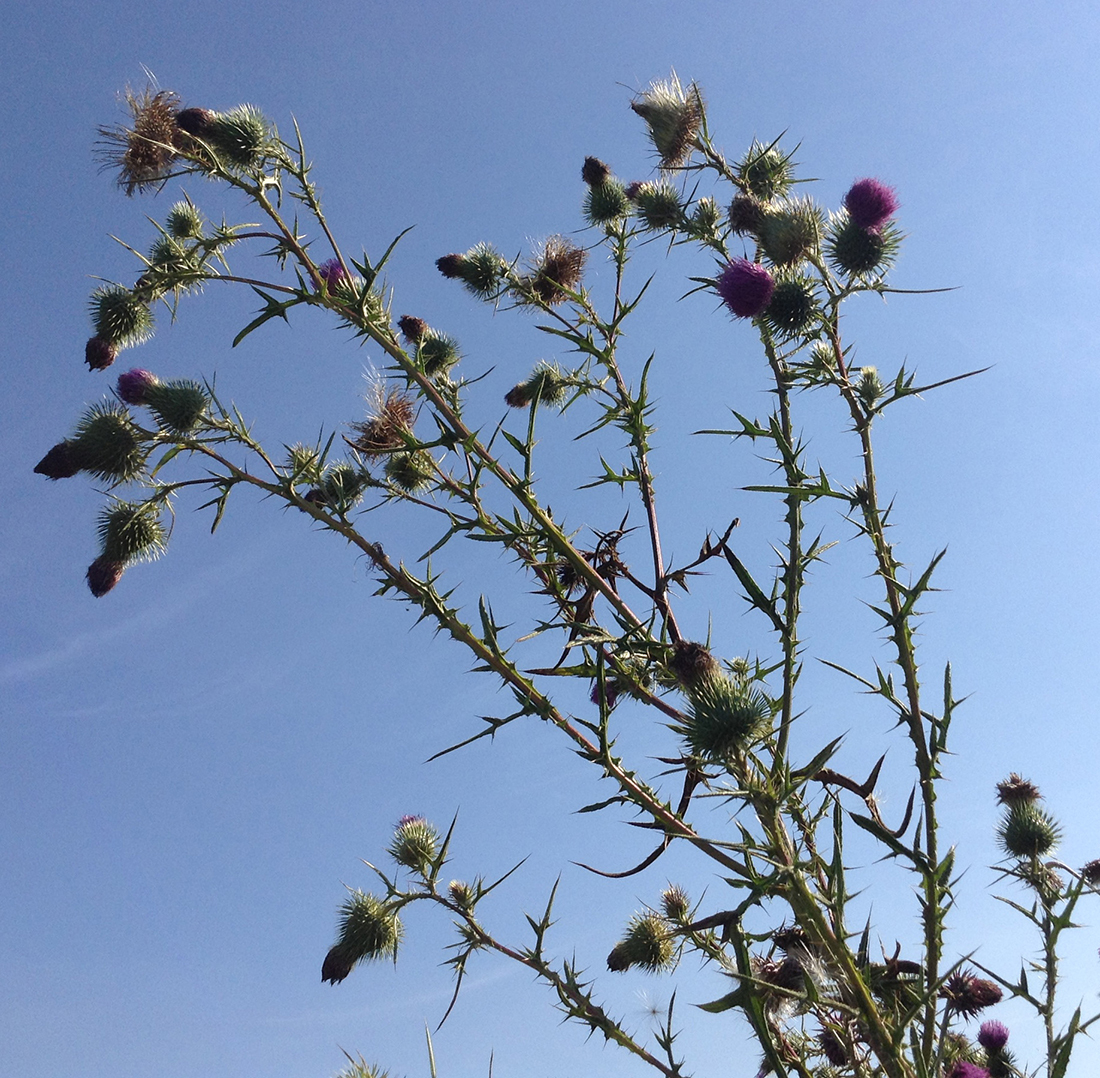
Updated: January 13, 2023
Published: January 13, 2023